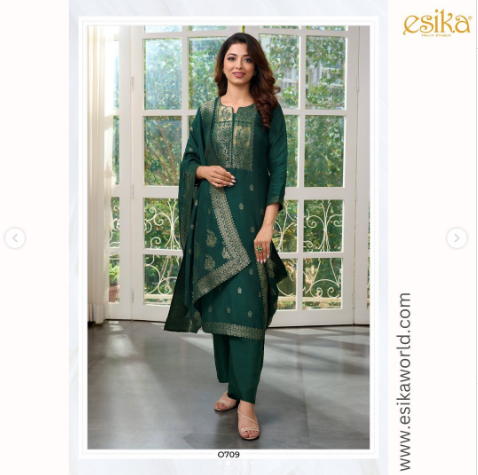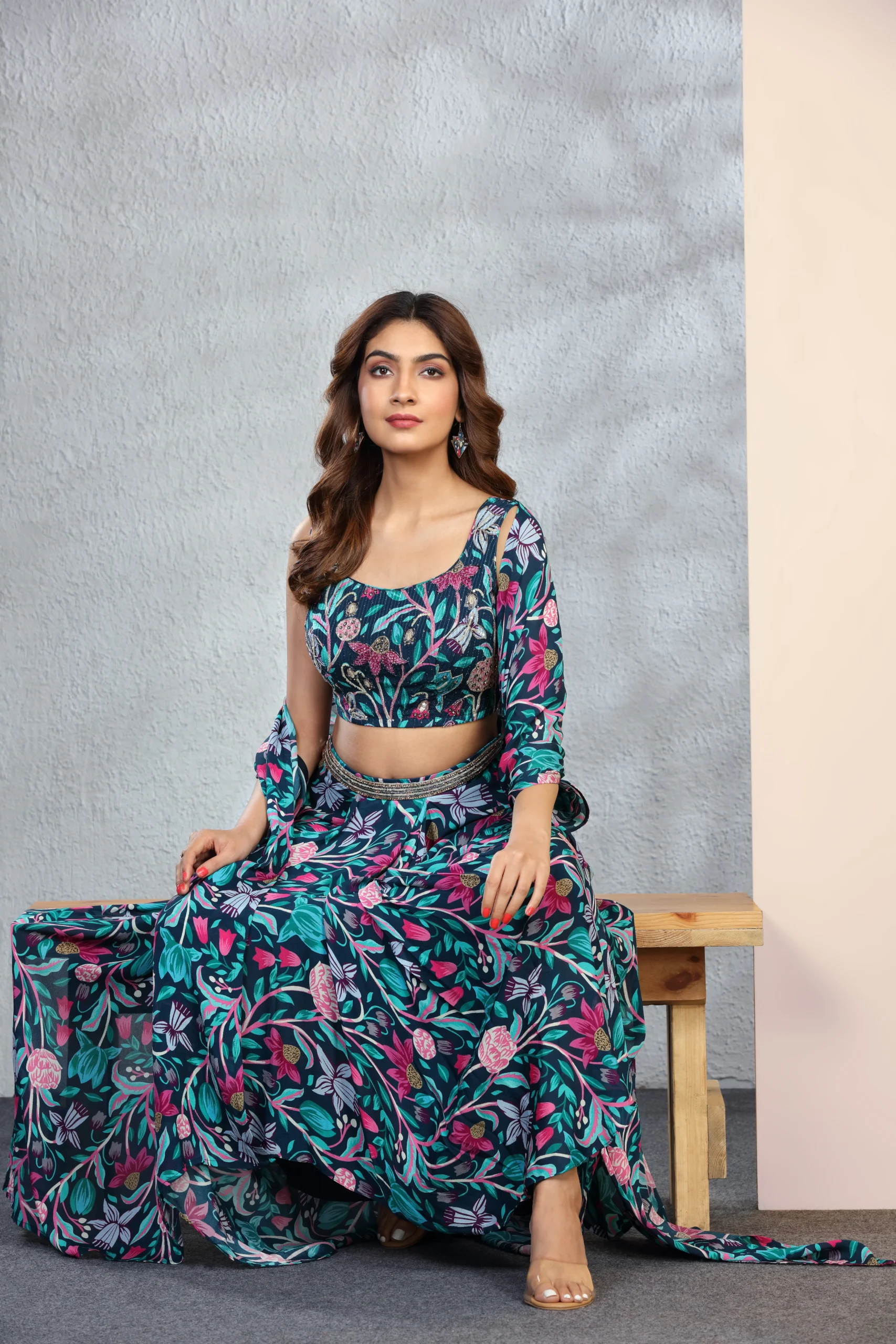Indian suits have long been a part of cultural identity and daily wear. They reflect regional styles, traditional craftsmanship, and timeless elegance. However, fashion trends are evolving quickly. Today’s consumers look for comfort, practicality, and uniqueness along with tradition. The key challenge is to blend heritage with modern expectations. This balance helps keep Indian suits relevant and desirable in today’s fashion market.
Understanding Traditional Elements
Traditional Indian suits are known for their intricate embroidery, vibrant colors, and rich fabrics. Techniques like zari, chikankari, bandhani, and mirror work have been passed down for generations. These styles tell stories from different parts of India. Salwar kameez, anarkali, and churidar suits have been wardrobe essentials for decades.
Traditional suits are mostly made with cotton, silk, georgette, or chiffon. They are often worn during festivals, weddings, and religious ceremonies. Bright colors and hand-done work make them stand out. These suits reflect identity and culture. But in everyday life, modern consumers also demand ease and adaptability.
Modern Preferences of Consumers
Modern buyers, especially young women, want stylish clothes that are easy to wear and maintain. They look for breathable fabrics, simple silhouettes, and innovative cuts. Minimalism is a rising trend. Consumers want Indian suits that are not overly heavy or complex.
Functionality also matters. Many women prefer suits that can be worn to work, casual outings, or even events with just a few styling changes. They are drawn to neutral tones, subtle embroidery, and versatile patterns. Fabrics that are lightweight and easy to care for are preferred.
Combining Tradition with Innovation
Designers and manufacturers need to strike a balance. One way is by updating classic designs with modern cuts. For example, pairing a traditional kurta with cigarette pants instead of salwars. Another trend is using fusion fabrics. Mixing cotton with lycra or georgette with silk can offer comfort and elegance.
Digital prints are another innovation. They reduce the need for handwork while still offering beautiful patterns. These prints can replicate traditional designs at lower cost and with more precision. It also allows designers to experiment with new motifs while keeping Indian aesthetics intact.
Focus on Comfort and Utility
Comfort is a major factor for modern consumers. Elastic waistbands, wrinkle-free fabrics, and breathable materials are now essential features. Lightweight dupattas, shorter kurtas, and practical designs are growing in popularity.
Consumers also want suits that transition easily from day to evening. A single outfit should be suitable for office, a lunch meeting, and even a family gathering. Smart layering, neutral palettes, and mix-and-match pieces help make this possible.
Use of Technology in Fabric and Design
Technology has opened many doors for innovation. With advanced machinery, intricate patterns can be printed directly on fabric. CAD (computer-aided design) software helps designers create samples faster. This allows quicker adaptation to fashion trends. Eco-friendly fabrics and sustainable dyes are also becoming popular. Organic cotton, bamboo fabric, and recycled textiles are being used in modern Indian suits. This meets the demand of conscious consumers without compromising on design.
Technology also aids mass customization. Consumers can now choose sleeve length, neckline, or fabric type before placing an order. This blend of traditional form and modern flexibility adds great value.
Innovating Color Palettes and Embroidery Styles
Traditional Indian suits often use bright colors like red, green, orange, and blue. But modern consumers lean towards pastel shades, earthy tones, and monotones. These colors feel more wearable for everyday life. They also blend well with minimalistic design.
Embroidery is being reimagined too. Instead of full heavy embroidery, designers are adding small motifs, border detailing, or statement sleeves. Mirror work is replaced by subtle sequins or thread work. This keeps the essence intact while adding a modern look.
Influences of Global Fashion
Global fashion trends also influence the Indian suit market. Many designs now borrow elements from Western fashion. For example, flared sleeves, crop-style kurtas, or jacket-style kameez are gaining traction. Fusion styles like Indo-western suits mix Indian embroidery with western cuts. Palazzo pants, long jackets, and cape dupattas have become new-age essentials. These pieces are both fashionable and rooted in Indian tradition.
Social media and fashion influencers also play a key role. They showcase how Indian suits can be styled in modern ways. This has made younger audiences more open to experimenting with Indian wear.
Meeting the Demands of Wholesale Buyers
Wholesale buyers look for variety, consistency, and quality. Manufacturers need to create collections that cater to both traditional and modern tastes. Offering different fabric options, a range of cuts, and color choices helps meet diverse buyer needs.
Bulk production must also maintain quality. Using modern tools without losing the authenticity of traditional work is essential. Having a wide catalog and steady inventory ensures long-term buyer relationships.
Creating Versatile Collections
Versatility is crucial. Manufacturers must design collections that allow customers to wear pieces across seasons and occasions. Using layering options, reversible dupattas, or detachable elements can make suits more versatile. A single suit can have more value if it can be styled in different ways. This appeals to budget-conscious consumers and also supports sustainability.
Collections should include classic styles, experimental cuts, and festive options. This variety helps attract both older and younger buyers. Offering suits in different sizes and fits is also important to serve a broader market.
Balancing tradition and innovation in Indian suits is not just a design decision. It is about understanding what consumers want. The charm of traditional work must be preserved, but it must evolve with changing lifestyles. Lighter fabrics, fresh colors, updated silhouettes, and smart styling can bridge the gap.
Modern Indian suits must honor heritage while offering comfort and ease. Innovation in design, fabric, and production helps meet the needs of today’s buyers. Retailers and wholesalers must work together to offer pieces that blend beauty with function. Looking to stock Indian suits that turn heads and meet modern style needs? Esika World brings you wholesale collections that blend timeless tradition with today’s fashion-forward trends—perfect for customers who want it all.
Explore the perfect mix of culture and contemporary—shop wholesale ladies’ suits now at Esika World!


